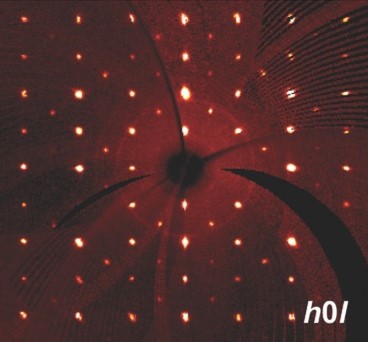dr. Graeme Blake (g.r.blake@rug.nl)
Organic-inorganic halide perovskites have attracted much attention as highly efficient absorbers in solar cells, as light emitters in optoelectronic devices, and in other emerging areas of application such as photodetectors, thermoelectric energy harvesting, magnetic cooling, and neuromorphic computing. In order to design new perovskites with specific properties and functionality, it is essential to understand their crystal structures in detail. They often exhibit a series of temperature or light-induced structural phase transitions driven both by features associated with the inorganic component and by orientational degrees of freedom of the organic molecules. This is often complicated by the presence of complex crystal twinning. We synthesise single crystal and polycrystalline halide perovskites and use X-ray diffraction techniques to obtain detailed knowledge of their crystal structures, leading to a better understanding of their optical, electronic and magnetic properties.
![Crystal structure of (CH3NH3)PbI3 at 200 K, showing four-fold disordered orientation of the methylammonium molecule and three-fold twinning of the crystal structure by rotation around the [201] direction.](assets/images/Projects/blake_crystallograpyproject.jpg)
Figure 1. Crystal structure of (CH3NH3)PbI3 at 200 K, showing four-fold disordered orientation of the methylammonium molecule and three-fold twinning of the crystal structure by rotation around the [201] direction. [1]

